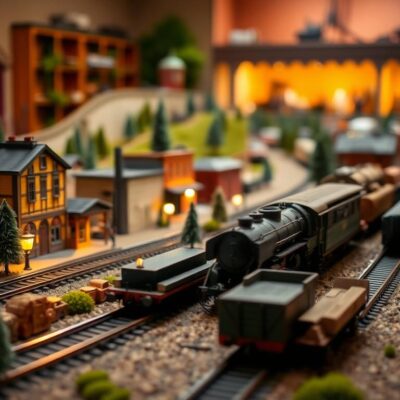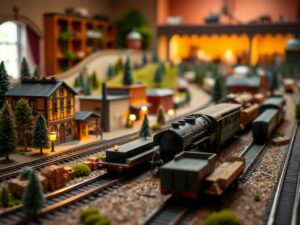
Understanding HO Scale Track Codes
Unlocking the Mysteries of HO Scale Track Codes: A Beginner’s Guide (And Beyond!)
Welcome, fellow railfans! In the vast and captivating world of model railroading, understanding the basics is paramount to achieving your wildest layout dreams. Today, we’ll be tackling a foundational aspect of our hobby: HO scale track codes. These seemingly simple numbers unlock a whole universe of track choices, compatible accessories, and customization options.
What Exactly Are Track Codes?
Imagine trying to assemble LEGO bricks without knowing which ones fit together, it would be chaos! Track codes work in much the same way, providing a universal language for connecting different types of model train tracks. Think of them as miniature blueprints that tell you:
- The type of rail used: HO scale track can vary from classic steel rails to heavier gauge options, influencing realism and train capabilities.
- Gauge: The distance between the rails dictates what rolling stock can run on it. In HO scale, this is most commonly standardized at 16.5mm (0.65 inches).
- Compatibility: Knowing the track code ensures that your locomotives and rolling stock won’t derail or get stuck trying to navigate incompatible curves or switches.
Decoding the Language of HO Scale Track Codes
In the world of HO scale, we primarily encounter two prominent track code systems:
- Code 83: This system utilizes a rail profile with an 0.083-inch height at the top (83 mil), making it a popular choice for its smooth running and good appearance on a layout. It’s often described as “midway between” Code 80 and Code 100, striking a balance between detail realism and operational ease.
- Code 100: With an even thicker rail profile (100 mil), this code signifies sturdier rails capable of handling heavier locomotives and larger trains with ease. While visually imposing, its larger size can make sharper curves more challenging to achieve without excessive radii (the bend radius of a curve).
The Importance of Understanding Code Numbers
- Seamless Operation: Using the right track codes for your rolling stock ensures smooth and trouble-free running. Think of it like driving a car â a compact vehicle on a freeway might feel strained, just as a massive train wouldn’t be happy trying to navigate tight curves designed for lighter cars!
- Layout Aesthetics: Different track codes can contribute to the visual appeal of your layout. Code 83 offers a classic look suitable for various scales and era representations, while Code 100 might lend itself well to heavier freight operations or grand scale industrial layouts.
Navigating HO Scale Track Code Choices
Choosing the right HO scale track codes is influenced by several factors:
- Rolling Stock: Are you running lightweight passenger cars or heavy locomotives? Consult your rolling stock documentation for recommended track code compatibility.
- Layout Design: Will you be creating tight urban scenes with sharp curves, sprawling countryside lines with long tangents (straight sections), or something in between? This will help determine whether a smoother Code 83 or more robust Code 100 track code is best suited.
- Personal Preference: Ultimately, your aesthetic taste plays a role! Consider the level of realism and detail you want to achieve when deciding between these codes.
Beyond the Basics: Specialized Track Codes
For advanced hobbyists looking for even greater control over their layout’s appearance and functionality, various specialized track codes exist:
- DCC Track: These tracks are designed specifically for DCC (Digital Command Control) systems, allowing you to electronically control individual locomotives and rolling stock with unparalleled precision.
- Flex Track: This modular track allows you to create custom curves and layouts of any desired shape, offering unparalleled freedom in layout design.
Final Thoughts: Building a Robust Track System for Success!
As we delve deeper into the intricacies of HO scale track codes, remember that your layout is an ever-evolving journey. Don’t be afraid to experiment with different track configurations, scales, and codes to find what truly sparks your creativity and satisfies your modeling passions!
Have any questions about specific track codes or applications? Don’t hesitate to share them in the comments below! Let’s build this model railroad community together, one expertly laid track at a time!








